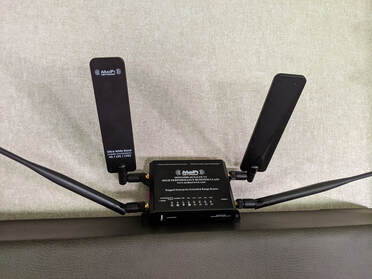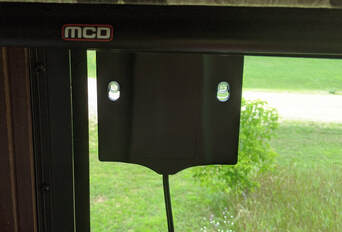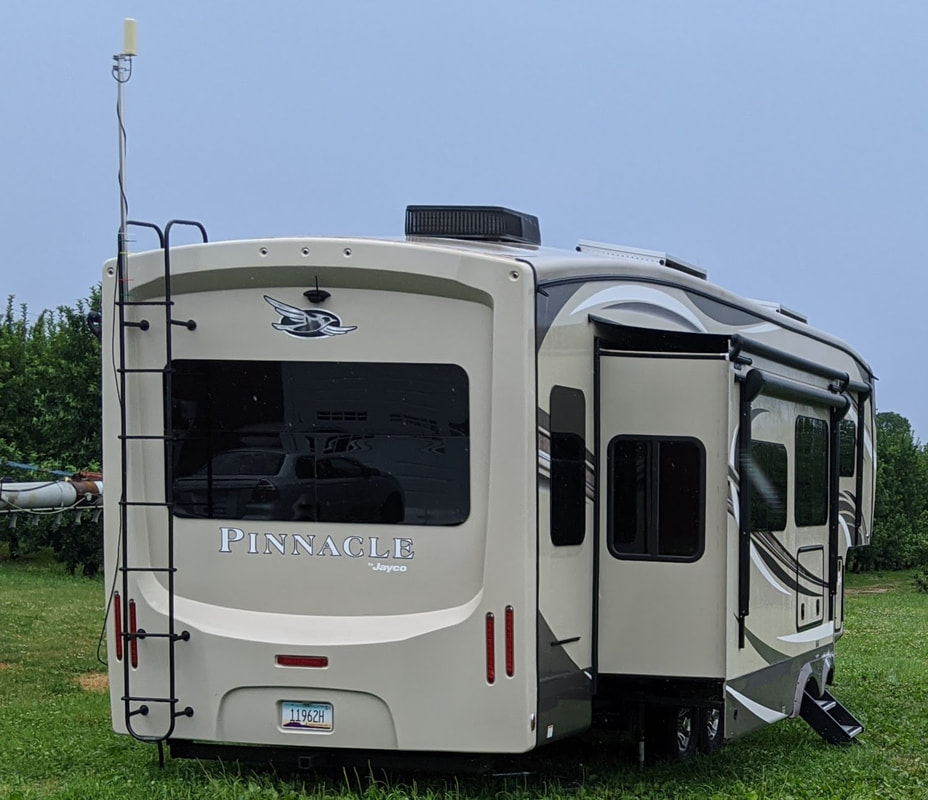 We planned our RV lifestyle around me working full time. Although that’s not currently happening, I have been doing some contract work. To successfully complete and submit any work requires reliable internet service — no matter where we are in the U.S. So, how do we ensure that necessity? Through a combination of technologies. Let me explain. One of the ways we connect to the internet is through our cellular network. For us, that’s Verizon. We can use our phones as mobile hotspots when needed. Just as our cellphones can access the internet anywhere we have Verizon service, they can transmit that same service to other devices nearby, such as our laptops. Some full-time RVers have personal Wi-Fi devices or hotspots from multiple cellular carriers rather than just one. That way, travelers can get the best internet coverage no matter their location. For example, we have a Verizon Jetpack MiFi device and a T-Mobile Mofi hotspot device we purchased from a third-party company called Millenicom. While moochdocking at my cousin’s farm in southwestern Michigan, we found the Mofi device worked better than its Verizon counterpart. In our current location elsewhere in Michigan, the Verizon device performs more effectively. Both of our devices offer unlimited data. Some cellular providers, however, throttle hotspot service when you hit a certain threshold of use, which results in super slow internet. We acquired the unlimited Verizon device shortly before the company ceased offering that feature. You can do some digging to find other unlimited options, such as the one from Millenicom. Mooch-networking Sometimes we can hop on our camping host’s Wi-Fi network, whether that be a moochdocking location or a paid campground. In either case, we get the stability and strength of the host’s Wi-Fi. In situations with spotty Wi-Fi from a host, we can transform our router into a repeater. That means the router grabs the host’s Wi-Fi signal and rebroadcasts it inside our trailer. Why don’t we just capture the host’s signal directly from our phones? Because the router has a much wider range than our phones to pull in the Wi-Fi.  Boosting the Signal To ensure stable internet with our Verizon and T-Mobile solutions, we use the Wilson Signal Booster Reach Extreme RV Kit. An external antenna captures cell service from all providers in the area and sends that service to a booster unit. Then, an internal antenna rebroadcasts that cell signal throughout our trailer. The only caveat is that the hotspot or mobile phone has to be within 10 feet of the internal antenna in order to access the boosted signal. Another booster we use is a MIMO antenna. This one assumes your mobile hotspot has external antenna ports. Our Verizon one has those ports, but our Millenicom one does not. This booster plugs into your mobile hotspot device and sticks to a window to amplify the cellular signal. Up in the Air Still another option RVers use to deal with online matters is satellite internet. This requires a satellite internet antenna to capture the signal and a satellite modem to transmit the captured signal to your rig. Antenna options include offerings from MobilSat, Winegard, iNetVu, and AVL. We’re eagerly awaiting the release of Elon Musk’s SpaceX Starlink satellite broadband internet, which promises fast internet access from anywhere in the world for a reasonable price. Relying on 12,000 satellites in a row in low-earth orbit, the technology is expected to be available in the U.S. and Canada later this year. And, it’s targeted for nearly worldwide availability in 2021.
2 Comments
So helpful! We have two MiFis but I want a cell booster to help it. I will check yours out.
Reply
Leave a Reply. |
AuthorThis is the travel blog of full-time RVers Bob and Lana Gates and our truck, Gulliver, and fifth wheel, Tagalong. Categories
All
Archives
July 2024
|

 RSS Feed
RSS Feed